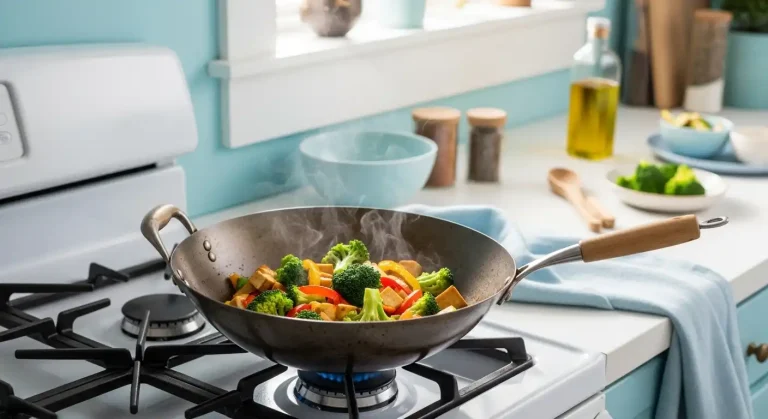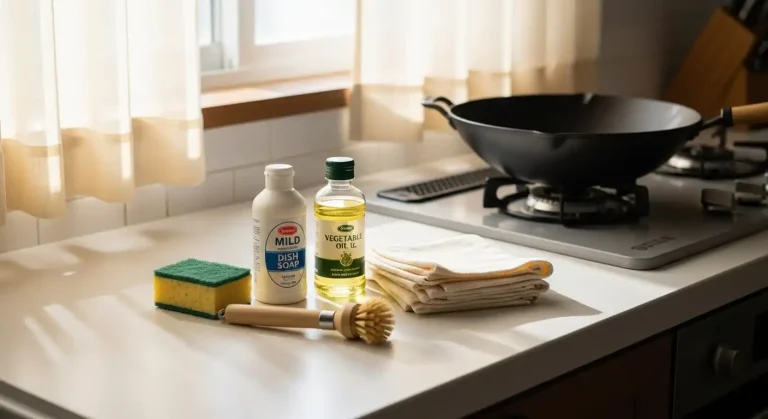How Big Of A Dutch Oven Do I Need For Bread?

There’s something magical about baking bread at home—the aroma, the crackling crust, the satisfaction of slicing into a loaf you made from scratch.
But if you’ve ever tried baking bread without the right tools, you know how frustrating it can be.
One of the most essential tools for achieving bakery-quality results is a Dutch oven.
So, how big of a Dutch oven do I need for bread? Let’s break it down.
🎄 Christmas & Year-End Amazon Deals !
Don’t miss out on the best discounts and top-rated products available right now!
*As an Amazon Associate, I earn from qualifying purchases.
Why Use a Dutch Oven for Bread?
Before we dive into sizes, it’s worth understanding why Dutch ovens are so beloved by bread bakers.

Dutch ovens are heavy, thick-walled pots—usually made of cast iron—that retain and distribute heat evenly.
When baking bread, they trap steam inside, mimicking the environment of a professional steam-injected oven.
This steam is crucial for developing a crisp, golden crust while keeping the interior soft and airy.
If you’re still weighing your options, check out this comparison between Dutch ovens and casserole dishes to see why Dutch ovens come out on top for bread baking.
The Ideal Dutch Oven Size for Bread
The sweet spot for most bread recipes is a Dutch oven between 4 and 7 quarts.

This range offers enough room for the dough to rise and expand without being too large to retain steam effectively.
4 to 5 Quarts: Perfect for Most Home Bakers
- Ideal for standard artisan loaves (1 to 1.5 pounds of dough)
- Compact enough to retain steam efficiently
- Great for sourdough, boules, and batards
A 5-quart Dutch oven is often considered the gold standard for home bread baking. It’s versatile, manageable, and fits most ovens.
6 to 7 Quarts: For Larger Loaves or Double Batches
- Suitable for 2-pound loaves or multiple smaller loaves
- Offers extra space for high-hydration doughs that expand more
- Ideal if you bake for a family or like to freeze extra loaves
Just be cautious: if the Dutch oven is too large, steam may dissipate too quickly, resulting in a drier crust.
Round vs. Oval Dutch Ovens
Shape matters too.
- Round Dutch ovens are ideal for bread. They support the dough’s rise and help create that beautiful dome shape.
- Oval Dutch ovens can work, especially for longer loaves, but they may not heat as evenly and can be awkward in smaller ovens.
If you’re curious about how Dutch ovens compare to other cookware, this Dutch oven vs. French oven guide is a great read.
What Happens If the Dutch Oven Is Too Small?
Using a Dutch oven that’s too small can lead to:
- Dough spilling over the sides
- Uneven baking
- A dense, undercooked center
Always ensure there’s at least 1 to 2 inches of space between the dough and the lid to allow for proper oven spring.
What If It’s Too Big?
A Dutch oven that’s too large won’t trap steam effectively. This can result in:
🎄 Christmas & Year-End Amazon Deals !
Don’t miss out on the best discounts and top-rated products available right now!
*As an Amazon Associate, I earn from qualifying purchases.
- A pale, soft crust
- Dry or uneven texture
- Heat loss during baking
If you only have a large Dutch oven, you can try placing a smaller oven-safe bowl of water inside to help generate steam.
Material Matters: Cast Iron vs. Alternatives

Most Dutch ovens used for bread are made of cast iron, either bare or enameled.
Cast iron retains heat exceptionally well, which is key for a consistent bake.
If you’re wondering how cast iron stacks up against other materials, this cast iron Dutch oven vs. stainless steel pot comparison is worth checking out.
Tips for Baking Bread in a Dutch Oven
Here are a few pro tips to get the most out of your Dutch oven:
- Preheat the Dutch oven: Place it in the oven while it preheats to ensure a hot surface for your dough.
- Use parchment paper: It makes transferring dough easier and prevents sticking.
- Score your dough: This helps control how the bread expands during baking.
- Remove the lid halfway through: This allows the crust to brown and crisp up.
And don’t forget to season your cast iron Dutch oven if it’s not enameled!
Cleaning and Maintenance
After baking, let your Dutch oven cool before cleaning.
Avoid using soap on bare cast iron, and never put it in the dishwasher unless it’s enameled and labeled dishwasher-safe.
For more care tips, read this guide on cleaning your Dutch oven and whether enamel Dutch ovens are dishwasher safe.
What If I Don’t Have a Dutch Oven?
No Dutch oven? No problem. You can still bake bread using alternatives like:
- A covered casserole dish
- A clay baker
- A baking stone with an inverted metal bowl
Explore more substitutes for Dutch ovens to find what works best for your kitchen.
Final Thoughts: How Big Of A Dutch Oven Do I Need For Bread?
To sum it up, a 5 to 6-quart round Dutch oven is the best all-around choice for most bread bakers.
🎄 Christmas & Year-End Amazon Deals !
Don’t miss out on the best discounts and top-rated products available right now!
*As an Amazon Associate, I earn from qualifying purchases.
It offers the perfect balance of space, heat retention, and steam trapping to help you bake crusty, golden loaves every time.
Whether you’re a sourdough enthusiast or just getting started with no-knead recipes, choosing the right Dutch oven size can make all the difference.
Still exploring your options? Dive deeper into comparisons like Dutch oven vs. slow cooker or Dutch oven vs. Instant Pot to see how versatile this tool really is.
Bonus: Recommended Dutch Oven Brands
If you’re ready to invest in a quality Dutch oven, consider trusted brands like:
- Lodge – Affordable and reliable. Learn more about Lodge Dutch ovens.
- Le Creuset – Premium enameled cast iron with vibrant colors.
- Staub – Known for its matte black interior and excellent heat retention.
And yes, Dutch oven lids are oven-safe—just make sure to check the manufacturer’s temperature limits.






